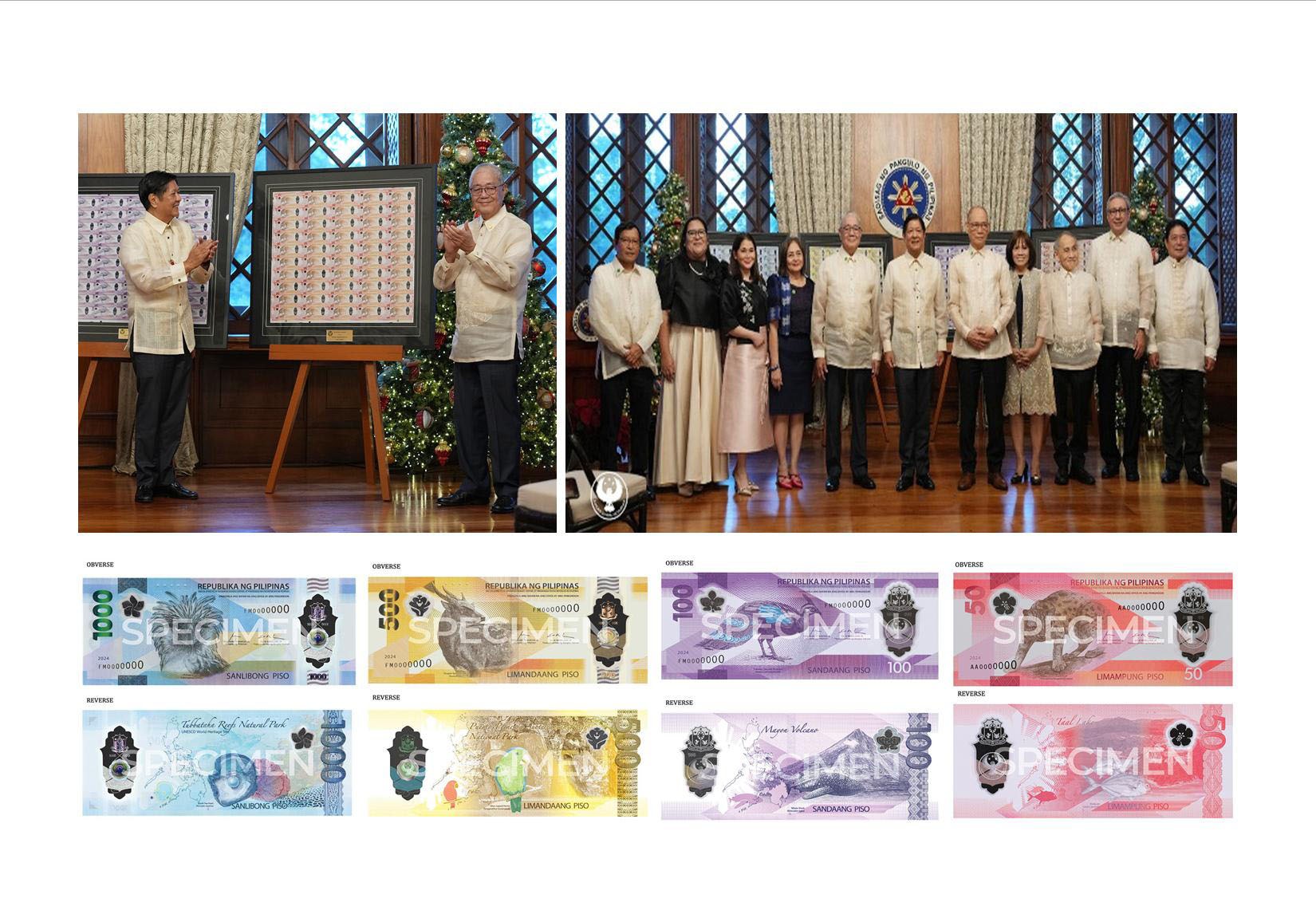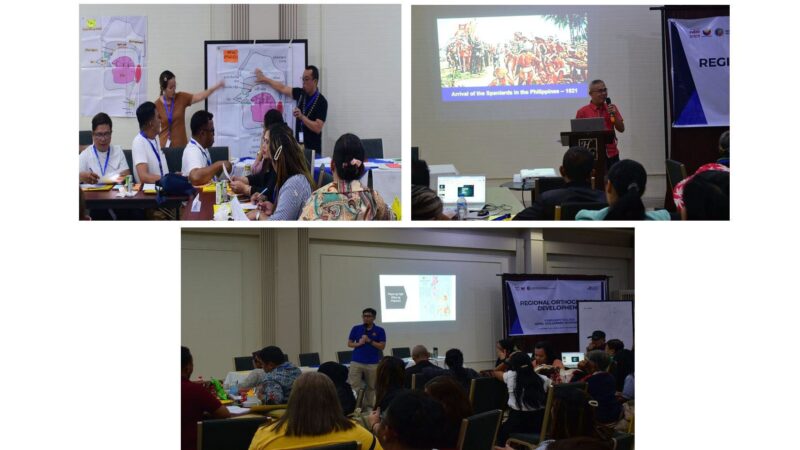President Marcos Receives New Polymer Banknote Series from BSP

In Photo: (Upper Left) President Ferdinand R. Marcos, Jr. praised the country. (left) and Central Bank of the Philippines Governor Eli M. Remolona,Jr. the First Philippine Polymer Banknote Series during its launch in Malacañang on 19 December. (Upper Right) President Marcos and BSP Governor Remolona (sixth and seventh from right) with (from left) BSP Deputy Governor Elmore O. Capule, Deputy Governor Mary Anne P. Lim, Deputy Governor Bernadette Romulo-Puyat, Deputy Governor Chuchi G . Fonacier, and Monetary Board Members Benjamin E. Diokno, Rosalia V. De Leon, Romeo L. Bernard, Walter C. Wassmer, and Joseph L. Cherubin. (Lower Photo) Polymer banknotes series consists of a 1000 peso, 500 peso, 100 peso and 50 peso. (BSP File Photo)
President Ferdinand R. Marcos, Jr. received the award. the “First Philippine Polymer Banknote Series” from the Central Bank of the Philippines (BSP) Governor Eli M. Remolona, Jr. during a ceremony at Malacañang on 19 December 2024. The polymer series consists of a 1000-peso polymer banknote, issued in April 2022; as well as new polymer denominations: 500-, 100-, and 50-piso.
Showcasing the Philippines’ rich biodiversity and cultural heritage, the polymer series’ 1000-, 500-, 100-, and 50-peso denominations feature images of indigenous and protected species in the country alongside traditional local a design of the fabric.
The polymer banknotes series are used simultaneously with paper banknotes. Both polymer and paper banknotes can be used for payment.
“The First Philippine Polymer Banknote, which includes 1000-, 500-, 100-, and 50-peso denominations, marks a historic moment for our country. This builds on the success of the 1,000-peso polymer note issued in April of 2022 and is in line with the global best practice of renewing the features of the currency every 10 years,” President Marcos, Jr. said.
“Polymer banknotes are designed to suit the needs of everyday life. Unlike paper banknotes, which wear out after about a year or a year and a half, polymer banknotes can last up to seven and a half years, five times longer. And that means we don’t have to replace them as often, saving us, reducing wasted resources, and contributing to truer environmental protection,” he added.
For BSP Governor Remolona, he stated that “the polymer series will raise awareness of the country’s endangered species, serve as a symbol of Filipino identity, and generate national pride.”
Polymer banknotes are Smarter, Cleaner, and Stronger. Smarter because they have more advanced anti-counterfeit security features and a smaller carbon footprint. Cleaner because viruses and bacteria don’t survive as long on polymer as they do on paper. Stronger because polymer banknotes last longer than their paper counterparts.
The new polymer banknote series will be released in limited numbers in the Greater Manila Area starting on 23 December 2024, and in the rest of the country very soon. New denominations of the polymer series can be withdrawn over-the-counter at banks. In the future, 500- and 100-peso polymer banknotes will also be available for withdrawal at automated teller machines (ATMs).
Each denomination of the polymer banknote features unique, indigenous, and endangered species of the Philippines, along with cultural elements that celebrate the country’s heritage:
1000-peso:Tubbataha Reefs Natural Park, South Sea pearl, and in T’nalak weave design
500-peso:Puerto Princesa Subterranean River National Park, blue-naped parrot, and southern Philippine weave design
100-piso:Mayon Volcano, whale shark, and Bicol Region weave design
50-piso:Taal Lake, native maliputo fish, and Batangas embroidery design
Polymer banknotes are easy to identify because they match the size and color of their paper counterparts. They also have accessibilty features such as highly embossed tactile dots on the top edge of polymer banknotes, which are intended to help the elderly and visually impaired people.
In line with its mandate to protect the integrity of currencies, the BSP periodically updates the materials, design, and security features of Philippine banknotes to prevent counterfeiting.
Central banks around the world are changing the design of paper money for a variety of reasons, including security against counterfeiting. Many change them about every 10 years. The current New Generation Currency Series of the Philippines first entered circulation more than 10 years ago. (PR)







